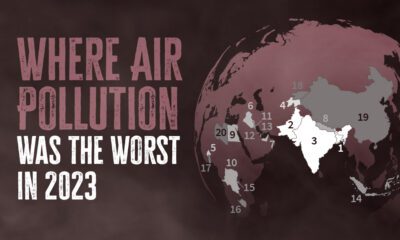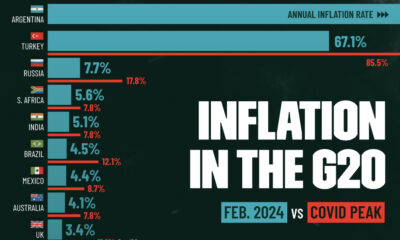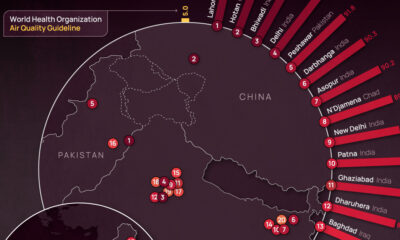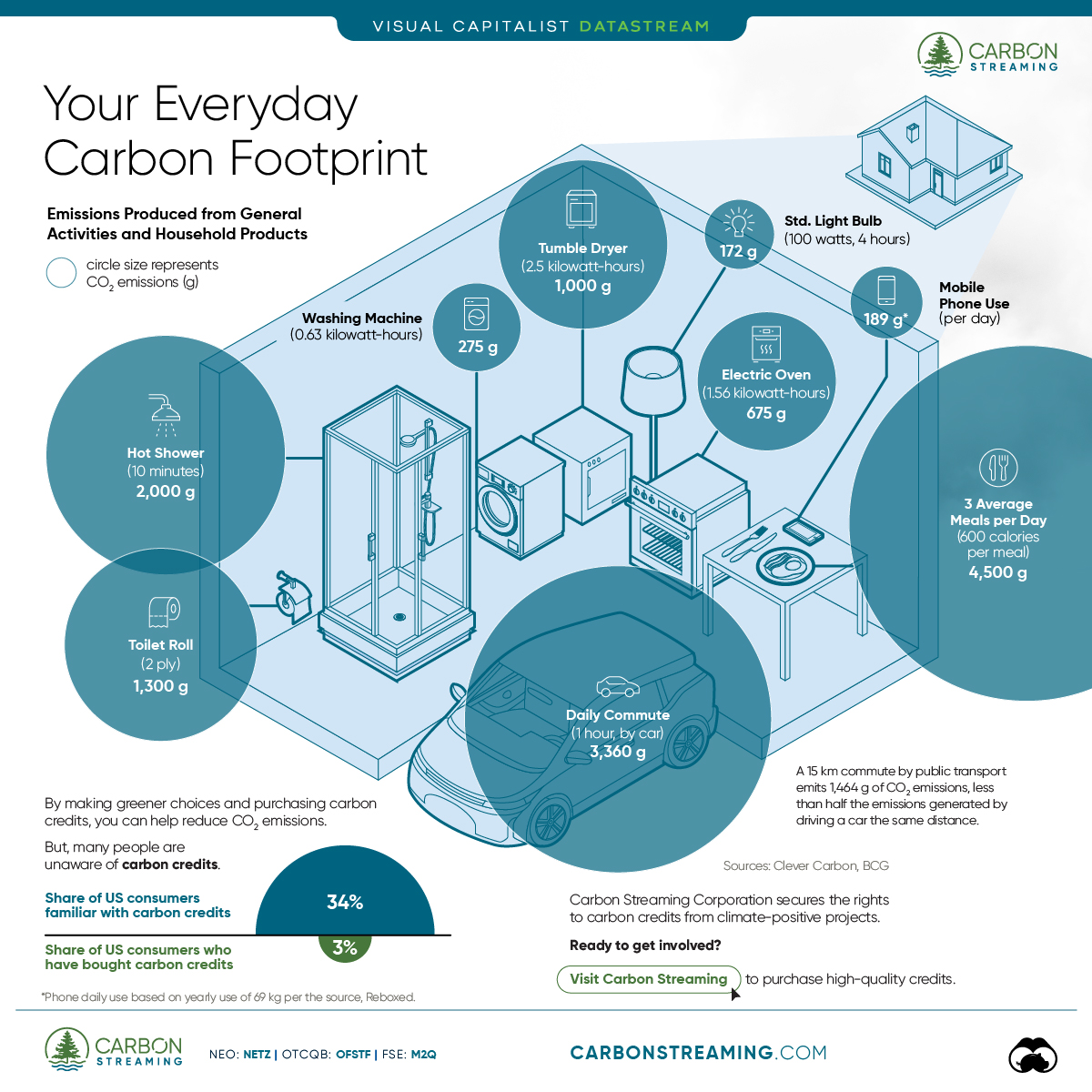Datastream
1.6 Billion Disposable Masks Entered Our Oceans in 2020

The Briefing
- 52 billion disposable face masks were produced in 2020 (this includes N95 respirators and surgical masks)
- It’s estimated that 1.6 billion of these masks ended up in our oceans
- This equates to roughly 5,500 tons of plastic pollution
Demand for Disposable Masks Skyrockets in 2020
Following the World Health Organization’s formal declaration of the COVID-19 pandemic, governments around the world quickly mandated the use of face masks in public spaces.
This led to a massive demand shock, prompting factories to begin producing disposable masks at full capacity. The majority of these masks were produced in China, and in April 2020, the country reported a staggering daily production figure of 450 million masks.
Plastic Pollution: A Lesser Known Side Effect
In Ocean Asia’s 2020 report, Masks on the Beach, researchers developed a formula to provide reasonable estimates for the number of disposable masks entering the environment.
Given an annual production figure of 52 billion disposable masks and a loss rate of 3% (the percentage of masks that escape water management systems), the team concluded that nearly 1.6 billion face masks wound up in our oceans in 2020. This amounts to approximately 5,500 tons of plastic pollution.
These masks are commonly made of polypropylene, which easily breaks up into microplastics. While the effects of microplastics on human health are not yet determined, these fragments are incredibly common in our water supply—for example, 94% of U.S. tap water is deemed to be contaminated.
Disposable Doesn’t Mean They’re Gone
Despite their single-use nature, disposable masks are expected to take more than four centuries to decompose while in the ocean. Here’s how this compares to other items we use on a day-to-day basis.
| Item | Years Needed to Biodegrade |
|---|---|
| Disposable masks | 450 |
| Disposable diaper | 450 |
| Plastic bottle | 450 |
| Aluminum can | 200 |
| Styrofoam cup | 50 |
| Plastic grocery bag | 20 |
| Cigarette butt | 10 |
The pandemic has extended well into 2021, and the number of disposable masks polluting our oceans is likely to continue growing.
With this in mind, various companies and organizations are beginning to search for a solution. One noteworthy example is Plaxtil, which is developing a method for recycling surgical masks so that the raw materials can be used for other products.
»Like this? Then you might enjoy this infographic on the flow of plastic waste.
Where does this data come from?
Source: Oceans Asia, Statista, Plastic Collectors
Datastream
Can You Calculate Your Daily Carbon Footprint?
Discover how the average person’s carbon footprint impacts the environment and learn how carbon credits can offset your carbon footprint.
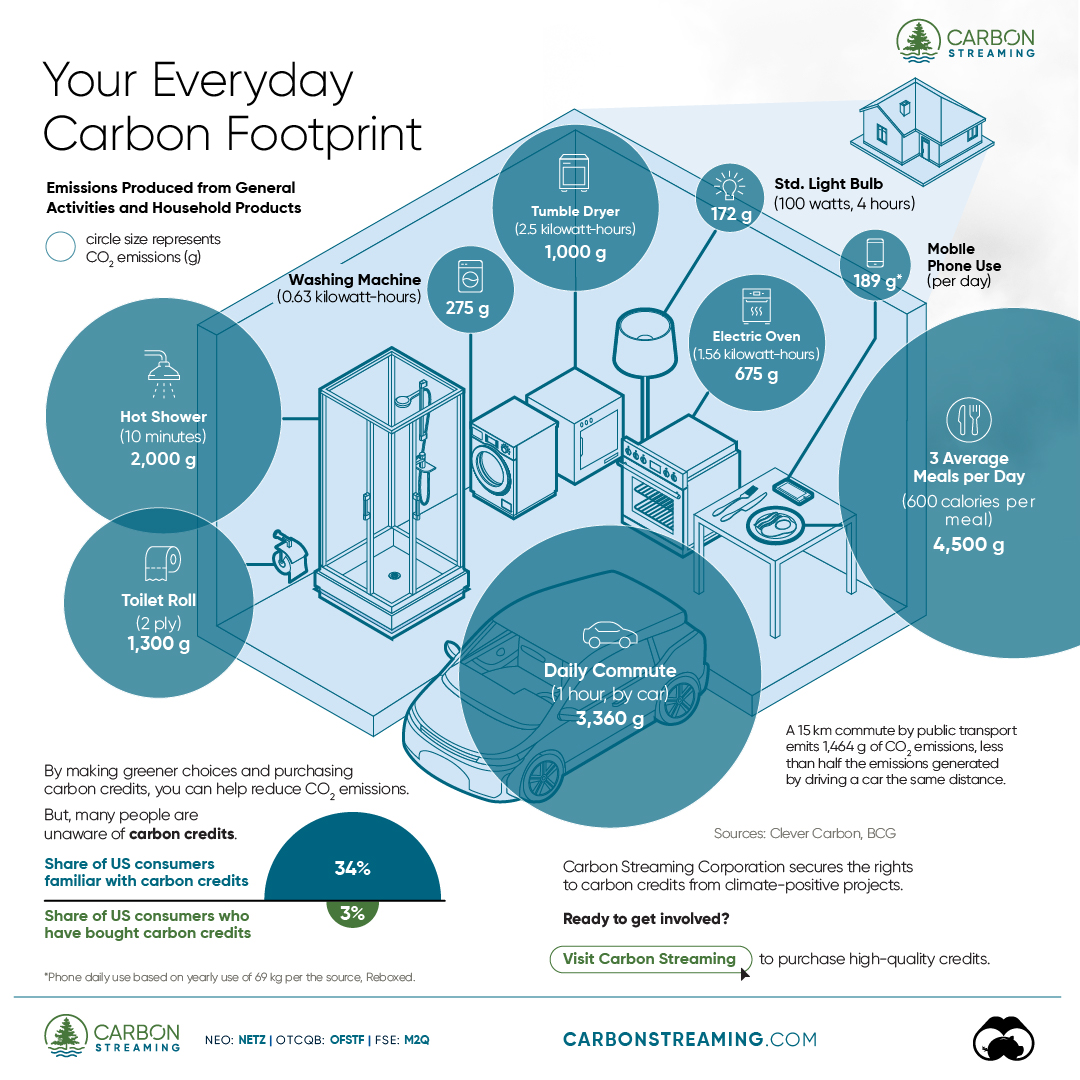
The Briefing
- A person’s carbon footprint is substantial, with activities such as food consumption creating as much as 4,500 g of CO₂ emissions daily.
- By purchasing carbon credits from Carbon Streaming Corporation, you can offset your own emissions and fund positive climate action.
Your Everyday Carbon Footprint
While many large businesses and countries have committed to net-zero goals, it is essential to acknowledge that your everyday activities also contribute to global emissions.
In this graphic, sponsored by Carbon Streaming Corporation, we will explore how the choices we make and the products we use have a profound impact on our carbon footprint.
Carbon Emissions by Activity
Here are some of the daily activities and products of the average person and their carbon footprint, according to Clever Carbon.
| Household Activities & Products | CO2 Emissions (g) |
|---|---|
| 💡 Standard Light Bulb (100 watts, four hours) | 172 g |
| 📱 Mobile Phone Use (195 minutes per day)* | 189 g |
| 👕 Washing Machine (0.63 kWh) | 275 g |
| 🔥 Electric Oven (1.56 kWh) | 675 g |
| ♨️ Tumble Dryer (2.5 kWh) | 1,000 g |
| 🧻 Toilet Roll (2 ply) | 1,300 g |
| 🚿 Hot Shower (10 mins) | 2,000 g |
| 🚙 Daily Commute (one hour, by car) | 3,360 g |
| 🍽️ Average Daily Food Consumption (three meals of 600 calories) | 4,500 g |
| *Phone use based on yearly use of 69kg per the source, Reboxed | |
Your choice of transportation plays a crucial role in determining your carbon footprint. For instance, a 15 km daily commute to work on public transport generates an average of 1,464 g of CO₂ emissions. Compared to 3,360 g—twice the volume for a journey the same length by car.
By opting for more sustainable modes of transport, such as cycling, walking, or public transportation, you can significantly reduce your carbon footprint.
Addressing Your Carbon Footprint
One way to compensate for your emissions is by purchasing high-quality carbon credits.
Carbon credits are used to help fund projects that avoid, reduce or remove CO₂ emissions. This includes nature-based solutions such as reforestation and improved forest management, or technology-based solutions such as the production of biochar and carbon capture and storage (CCS).
While carbon credits offer a potential solution for individuals to help reduce global emissions, public awareness remains a significant challenge. A BCG-Patch survey revealed that only 34% of U.S. consumers are familiar with carbon credits, and only 3% have purchased them in the past.
About Carbon Streaming
By financing the creation or expansion of carbon projects, Carbon Streaming Corporation secures the rights to future carbon credits generated by these sustainable projects. You can then purchase these carbon credits to help fund climate solutions around the world and compensate for your own emissions.
Ready to get involved?
>> Learn more about purchasing carbon credits at Carbon Streaming
-

 Green6 days ago
Green6 days agoThe Carbon Footprint of Major Travel Methods
-

 Misc2 weeks ago
Misc2 weeks agoHow Hard Is It to Get Into an Ivy League School?
-

 Debt2 weeks ago
Debt2 weeks agoHow Debt-to-GDP Ratios Have Changed Since 2000
-

 Sports2 weeks ago
Sports2 weeks agoThe Highest Earning Athletes in Seven Professional Sports
-

 Science2 weeks ago
Science2 weeks agoVisualizing the Average Lifespans of Mammals
-

 Brands2 weeks ago
Brands2 weeks agoHow Tech Logos Have Evolved Over Time
-

 Energy2 weeks ago
Energy2 weeks agoRanked: The Top 10 EV Battery Manufacturers in 2023
-
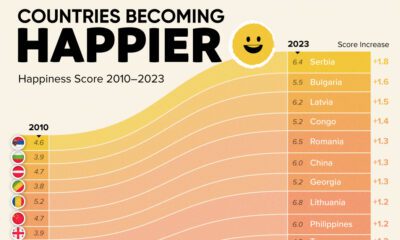
 Demographics1 week ago
Demographics1 week agoCountries With the Largest Happiness Gains Since 2010





